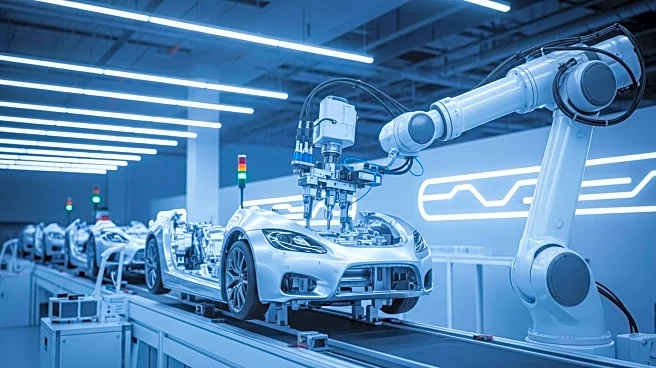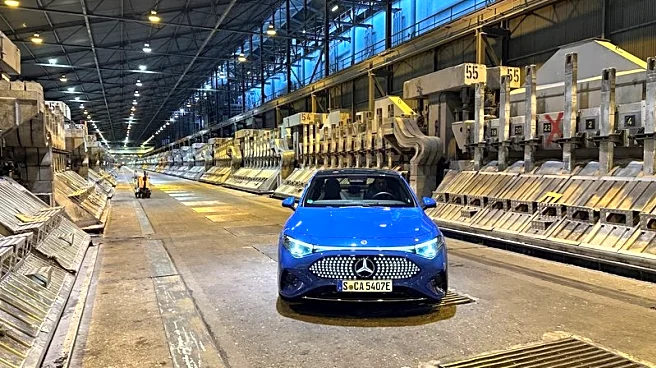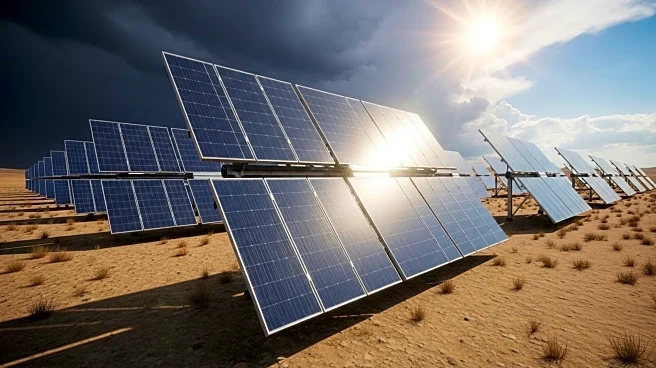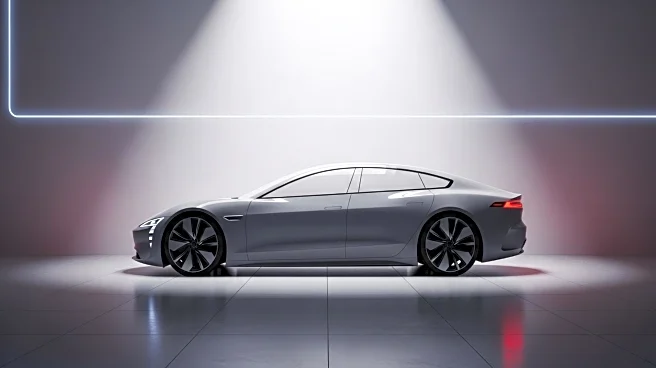What's Happening?
Mercedes-Benz has commenced pre-series production of its new VLE electric people mover at the Vitoria plant in Spain. This marks a significant step towards the vehicle's full market debut, scheduled for the first half of 2026. The VLE is designed to offer saloon-like ride comfort combined with the versatility of a multi-purpose vehicle (MPV), accommodating up to eight passengers. It targets families, active lifestyle buyers, and premium shuttle operators. The VLE will be the first van to feature the Mercedes-Benz Operating System (MB.OS), indicating a major advancement in digital integration for the brand's commercial lineup. The Vitoria plant has undergone extensive modernization, with over 90% of upgrades completed, including a new body shop, flexible paint shop, and modernized assembly hall. The plant operates on 100% renewable electricity and incorporates solar power, geothermal heating, and waste-heat recovery, ensuring net carbon-neutral production.
Why It's Important?
The introduction of the VLE electric people mover represents a strategic move by Mercedes-Benz to expand its electric vehicle offerings and enhance its commercial lineup with advanced digital integration. The use of the Mercedes-Benz Operating System (MB.OS) in the VLE signifies a shift towards more connected and technologically sophisticated vehicles. This development is crucial for Mercedes-Benz as it aligns with global trends towards sustainability and digitalization in the automotive industry. The VLE's design caters to diverse consumer needs, from family transportation to premium shuttle services, potentially broadening Mercedes-Benz's market reach. The modernization of the Vitoria plant underscores the company's commitment to sustainable manufacturing practices, which could set a precedent for other automotive manufacturers.
What's Next?
Mercedes-Benz plans to officially debut the VLE in the first half of 2026, with Vitoria leading global production. As the vehicle approaches its market launch, Mercedes-Benz is likely to focus on marketing strategies to highlight the VLE's unique features and appeal to its target demographics. The successful integration of MB.OS in the VLE could pave the way for its adoption in other models, enhancing the brand's competitive edge in the digital vehicle space. Stakeholders, including consumers and industry analysts, will be watching closely to see how the VLE performs in real-world conditions and how it impacts Mercedes-Benz's position in the electric vehicle market.
Beyond the Headlines
The VLE's production and upcoming launch could have broader implications for the automotive industry, particularly in terms of digital integration and sustainable manufacturing practices. The use of MB.OS may influence other manufacturers to develop proprietary operating systems, fostering innovation and competition in vehicle connectivity. Additionally, Mercedes-Benz's commitment to renewable energy and carbon-neutral production at the Vitoria plant may encourage other companies to adopt similar practices, contributing to the industry's overall sustainability goals.











